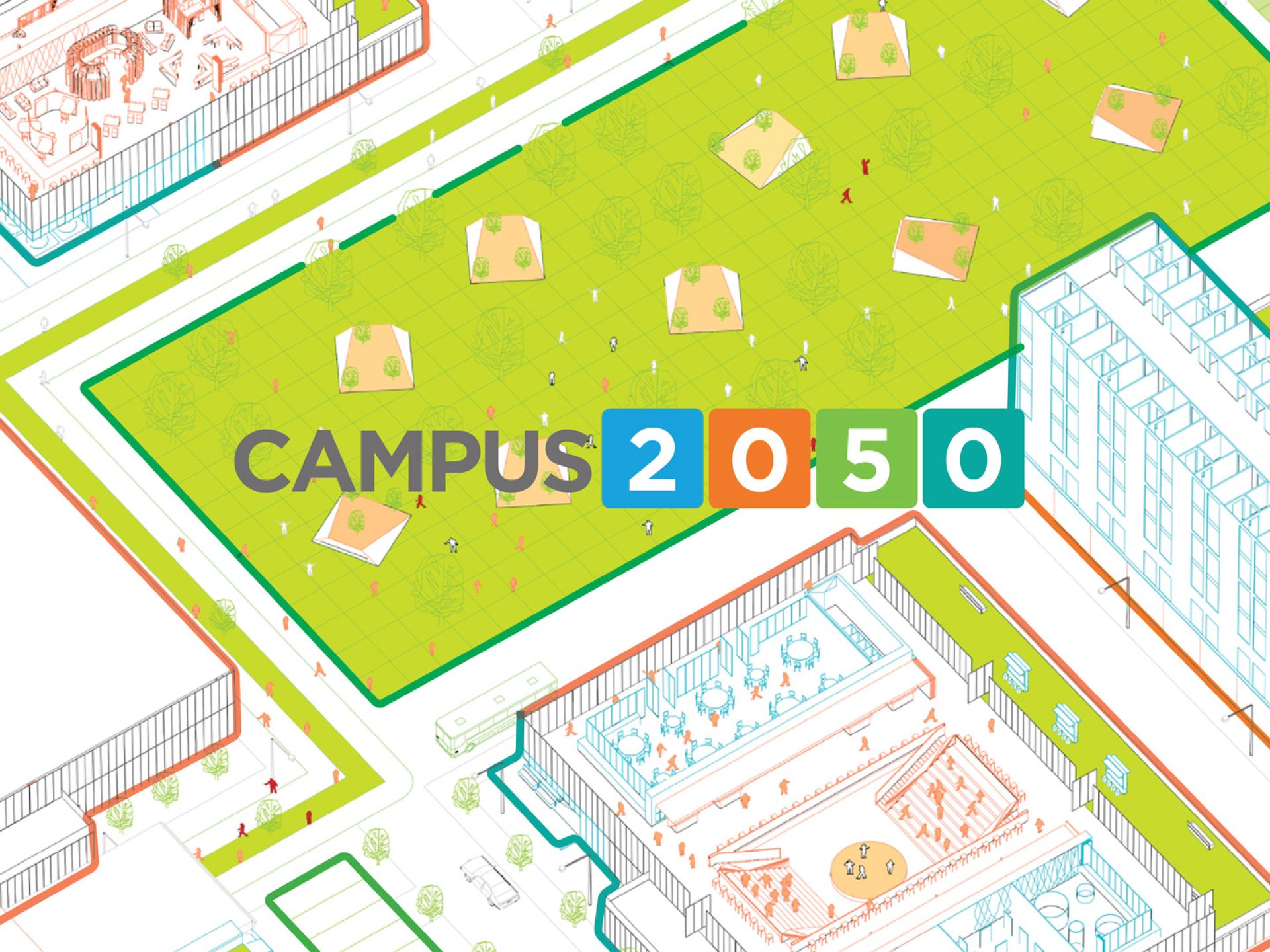May 1, 2018
Making the Case for Innovation Districts

One of the biggest challenges that campuses face in the next 30 years is achieving a truly multi-purpose, multi-disciplinary and multi-cultural campus experience. As shown by extensive research published by the Brookings Institution, innovation and mixed-use districts present interesting opportunities for university campuses looking to think differently about sustainability, economic impact and urban renewal.
Having worked alongside many city governments and universities to plan and construct large-scale projects, we believe there’s a case to be made for these districts in more major metro areas across the United States. The challenge lies in finding new ways to bundle capital projects, funding sources and governance at a time when all of these seem to be in flux.
While there is no one-size-fits-all solution to planning a successful campus mashup of urbanity, knowledge and lifestyle, many successful innovation districts employ a pair of strategies:
- Create economy through mixed-use opportunities
- Build resilient strategic and physical infrastructure
Create economy through mixed-use opportunities
Back in 2014, every major metro was planning or thinking about planning an innovation district. The success of destinations like Kendall Square in Cambridge, Mass., made it seem simple; combine the diversity and amenities of a city with those of a nearby university, add a layer of R&D, and viola, let the rules of economy take care of the rest.
However, while Kendall Square prospered, many planned innovation districts, such as Palo Alto’s Arts and Innovation District or the Oklahoma City Innovation District, have been slower to take off. At the same time, international innovation district destinations like London and Toronto have led the charge with testing new combinations of use and economic development. In general, successful innovation districts tend to have similar qualities like:
- More than two economic anchors: health & wellness, research, major corporation, university, convention district, sports and entertainment complex or industrial hub
- Diverse cultures, institutions, established companies and startups. Consider San Francisco, where non-Hispanic whites comprise less than half of the population, 23 colleges and universities are within its bounds, and where six of the world’s 10 top technology companies are headquartered.
- A range of activities to grow skills while building social and professional networks. Urban universities and mixed-use districts host a variety of events while also providing attendees with dining, retail and entertainment.
Build Resilient Strategic and Physical Infrastructure
Major metros such as San Francisco, Washington DC and New York have been able to weather financial crashes, natural disasters and major political shifts since their inception because they are resilient. While many universities in the U.S. are struggling financially, those that are close to major metros (like Houston, Philadelphia, San Francisco and Los Angeles) are still experiencing consistent growth as well as financial success through management of their endowments and development partnerships.
The question is, if you don’t have the good fortune of being in or near a major metropolitan area that’s thriving, how do you replicate one? Consider the following:
- Innovative finance models are key to unlocking varying levels of affordability. Specifically, supporting multiple avenues for investment and resource sharing are critical. The Cortex Innovation District in St. Louis is a tax-exempt 501(c)3 made up of five anchor companies / institutions.
- Have a range of small and large, short- and long-term strategic initiatives in place. This might mean establishing a satellite campus closer to the nearest major metropolitan area, partnering with a major corporation to share development costs in exchange for access to human capital or focusing on an existing university strength such as student success rates in a particular field of study (i.e. STEM).
- Transit connectivity and proximity to retail, housing and open space. In the future, this may mean investments in autonomous transit systems over personal vehicles, partnerships with local civic entities or other universities for shared housing and associated amenities.
The Graduation of American Universities
In “A New Education,” Cathy N. Davidson illustrates how the university system hasn’t changed much since the 1800s when Harvard President Charles Elliott turned the system of higher education on its head. He made great strides in transforming an agricultural workforce into an industrialized one while serving as a catalyst for the modern research institution and “state” school.
As we examine the dire need to do this once more, how do we educate for unimaginable change? Maybe it’s time we begin to plan in a more integrated way. We can leverage the strengths of cities, the talent of universities and the ventures that result from mashups of the two to shape the human capital the world needs to build a brighter future.
♦♦♦
Lorem ipsum dolor sit amet consectetur, adipisicing elit. Non facere corporis et expedita sit nam amet aut necessitatibus at dolore enim quis impedit eius libero, harum tempore laboriosam dolor cumque.
Lorem, ipsum dolor sit amet consectetur adipisicing elit. Illo temporibus vero veritatis eveniet, placeat dolorem sunt at provident tenetur omnis, dicta exercitationem. Expedita quod aspernatur molestias eum? Totam, incidunt quos.
